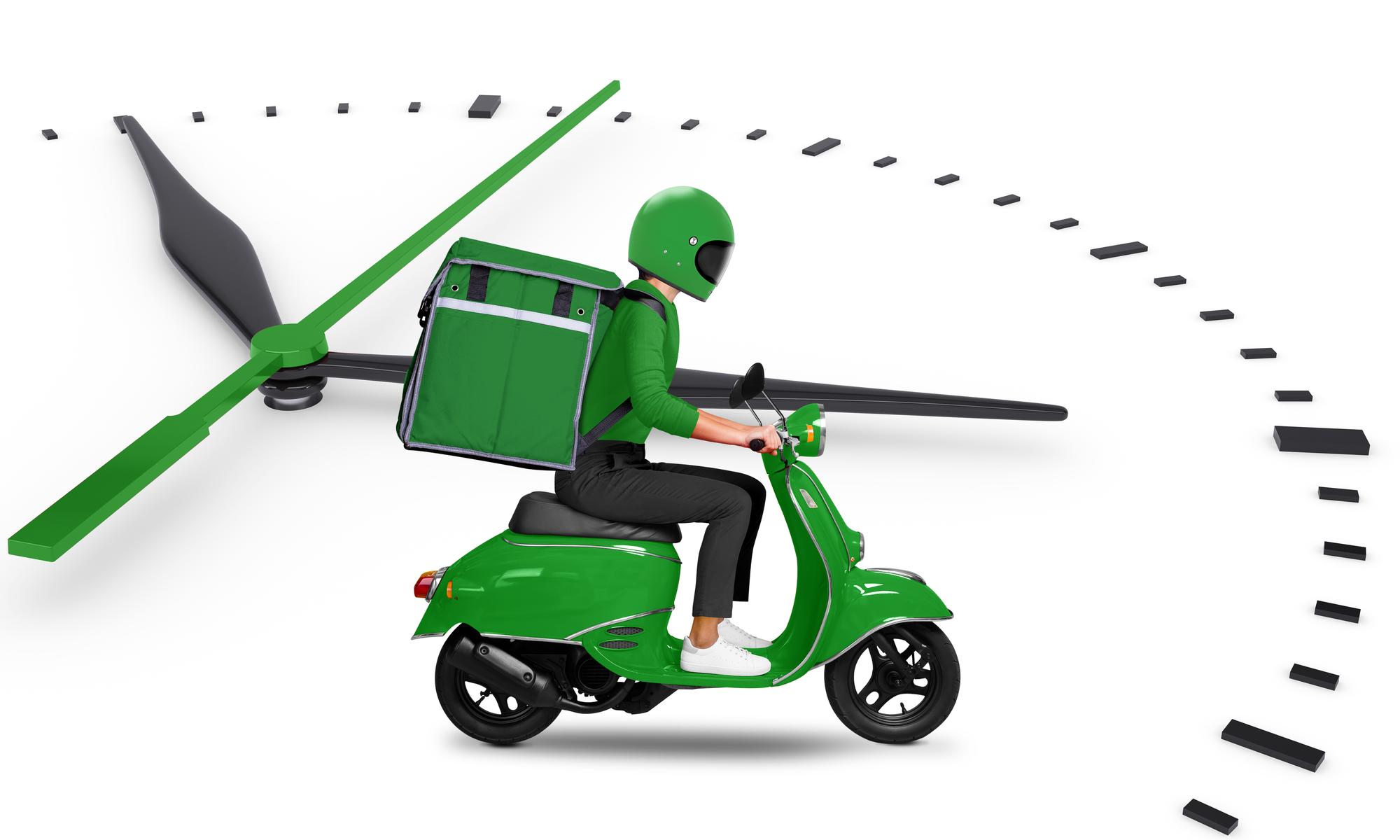How Logistics Leaders Can Master Last-Mile Delivery Without Breaking the Bank

In the world of supply chain and logistics, last-mile delivery is both the most critical and the most challenging stage. It accounts for nearly 53% of total shipping costs and is often where businesses face delays, inefficiencies, and dissatisfied customers. The last mile—the final leg of the delivery process, from the distribution center to the customer’s doorstep—has become a battleground for customer experience and operational efficiency.
As consumers demand faster and more flexible delivery options, companies face mounting pressure to optimize this crucial stage without incurring unsustainable costs. In this article, we explore actionable strategies and innovative solutions to master last-mile delivery while keeping expenses under control.
High Customer Expectations: The rise of same-day and next-day delivery has redefined consumer expectations, forcing businesses to speed up operations.
Inefficient Routes: Urban congestion and rural dispersion make it difficult to find cost-effective delivery routes.
Failed Deliveries: Missed deliveries due to customer unavailability lead to repeat trips, doubling costs.
Scalability Challenges: Scaling last-mile operations during peak seasons adds to costs due to higher demand for drivers and vehicles.
Fact: According to a Capgemini study, 74% of customers would remain loyal to a brand if it offered better delivery experiences, showing that last-mile delivery isn’t just a cost—it’s an investment in customer retention.
1. Embrace Route Optimization Technology
Poorly planned delivery routes waste time, fuel, and labor, significantly inflating last-mile costs.
Solution: Invest in route optimization software that uses AI and real-time data to design the most efficient delivery paths. These systems factor in:
Traffic patterns.
Weather conditions.
Customer locations.
Example: UPS’s ORION system, a route optimization tool, saved the company over $400 million annually by shaving a mile off each driver’s route.
Takeaway: Optimized routes mean fewer miles traveled, reduced fuel costs, and faster deliveries, improving both efficiency and profitability.
Centralized warehouses often result in long delivery distances, increasing both time and cost. To overcome this, many companies are turning to delivery hubs and micro-fulfillment centers.
Solution: Set up smaller, strategically located hubs closer to high-demand areas. These hubs allow businesses to:
Shorten delivery distances.
Enable same-day delivery for urban customers.
Scale operations during peak seasons without straining resources.
Example: Amazon’s network of urban delivery stations enables its Prime members to receive one-day or same-day deliveries in major cities, dramatically improving customer satisfaction.
Takeaway: By decentralizing fulfillment, businesses can significantly cut last-mile costs and meet customer expectations for faster delivery.
Hiring and maintaining a dedicated fleet of delivery drivers is costly and inefficient for businesses with fluctuating delivery volumes.
Solution: Use crowdsourced delivery platforms like Uber Freight, DoorDash Drive, or Postmates. These services tap into gig economy drivers, providing on-demand delivery support during peak times.
Example: Walmart partnered with DoorDash for its last-mile deliveries, enabling the retailer to handle surges in demand without incurring the fixed costs of additional drivers or vehicles.
Takeaway: Crowdsourced delivery models reduce overhead costs, increase scalability, and ensure timely deliveries during high-demand periods.
Failed deliveries due to customer unavailability are a major cost driver in last-mile logistics. Parcel lockers offer an alternative delivery model that eliminates the need for repeat trips.
Solution: Install parcel lockers in high-traffic areas such as apartment complexes, grocery stores, or office buildings. Customers can pick up their orders at their convenience, reducing the number of failed deliveries.
Example: FedEx and Amazon have both invested heavily in parcel locker systems to streamline last-mile delivery and provide added convenience for customers.
Takeaway: Parcel lockers reduce delivery failures, cut down on costs, and improve customer satisfaction by offering flexibility.
Uncoordinated delivery times often lead to wasted trips and increased fuel consumption. Smart delivery scheduling solves this problem by allowing customers to choose time slots when they are most likely to be available.
Solution: Offer time-slot-based delivery scheduling through your eCommerce platform or delivery app. Optimize routes based on customer-selected windows to minimize wasted trips.
Example: Instacart uses smart delivery scheduling to group orders within the same area and time frame, reducing both costs and delivery times.
Takeaway: By empowering customers to schedule their deliveries, businesses can improve efficiency and reduce unnecessary trips.
While still emerging, autonomous delivery vehicles and drones offer a glimpse into the future of cost-effective last-mile delivery. Companies are already piloting these technologies to streamline operations and reduce labor costs.
Solution: Begin experimenting with autonomous vehicles or drone delivery services for specific areas, such as urban centers or campus settings.
Example: Domino’s successfully piloted autonomous pizza delivery vehicles in select cities, reducing delivery costs and gaining publicity as an innovation leader.
Takeaway: Though initial investment is high, autonomous technologies hold the potential to revolutionize last-mile delivery by reducing reliance on human labor.
Real-Time Tracking: Platforms like Route4Me and DispatchTrack provide real-time updates, allowing businesses to monitor deliveries and proactively address delays.
AI-Driven Demand Forecasting: Predictive analytics help businesses prepare for peak demand, ensuring sufficient resources for last-mile operations.
Contactless Delivery: COVID-19 accelerated the adoption of contactless delivery technologies, improving safety and convenience for both customers and drivers.
Mastering last-mile delivery requires businesses to strike a balance between speed, cost-efficiency, and customer satisfaction. By embracing technologies like route optimization, crowdsourced delivery, and parcel lockers, businesses can streamline their last-mile operations without breaking the bank.
In today’s customer-centric economy, efficient last-mile delivery is more than a logistics challenge—it’s a competitive advantage. Businesses that rise to this challenge will not only reduce costs but also build stronger, more loyal customer relationships.
Last-mile delivery is one of the most challenging and cost-intensive segments of logistics. Virtual Delivery Centers (VDCs) provide a modern, technology-driven approach to optimize this critical phase of supply chain management.
How VDCs Streamline Last-Mile Delivery:
Dynamic Route Optimization: Use AI-powered tools to calculate the fastest and most cost-efficient routes, reducing fuel consumption and delivery times.
On-Demand Workforce: Scale your delivery team with virtual support staff to manage sudden spikes in demand without long-term commitments.
Real-Time Tracking Solutions: Implement advanced tracking systems to provide live updates to customers, enhancing transparency and satisfaction.
Inventory Synchronization: Connect inventory systems with delivery networks to ensure timely replenishment and avoid delays.
Data Analytics for Insights: Leverage analytics to identify inefficiencies, monitor performance, and continuously improve delivery operations.
By adopting a VDC model, logistics leaders can lower operational costs, enhance customer satisfaction, and maintain flexibility in a competitive market. This approach enables businesses to meet the demands of modern e-commerce without breaking the bank.

By redesigning packaging, exploring reusable models, investing in smart tracking, and leveraging the VDC model for execution, beverage manufacturers can reduce their environmental footprint while boosting their brand relevance and operational resilience.

Even the most capable in-house IT teams often fall short when it comes to minimizing downtime. While Managed Services solve much of the downtime problem, the VDC model supercharges it with flexibility, scalability, and domain-specific expertise.